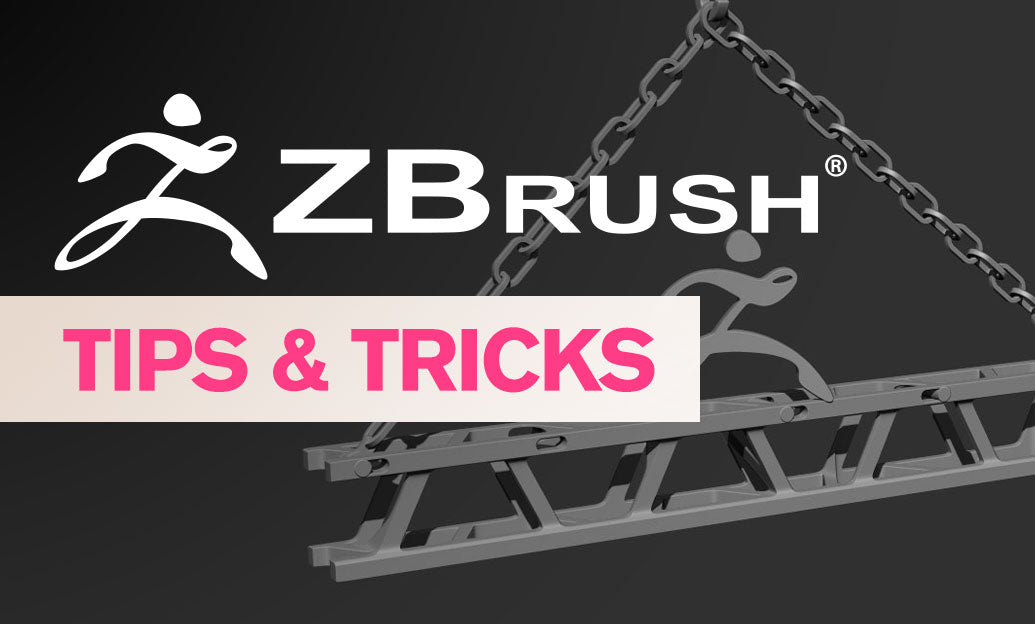Your Cart is Empty
Customer Testimonials
-
"Great customer service. The folks at Novedge were super helpful in navigating a somewhat complicated order including software upgrades and serial numbers in various stages of inactivity. They were friendly and helpful throughout the process.."
Ruben Ruckmark
"Quick & very helpful. We have been using Novedge for years and are very happy with their quick service when we need to make a purchase and excellent support resolving any issues."
Will Woodson
"Scott is the best. He reminds me about subscriptions dates, guides me in the correct direction for updates. He always responds promptly to me. He is literally the reason I continue to work with Novedge and will do so in the future."
Edward Mchugh
"Calvin Lok is “the man”. After my purchase of Sketchup 2021, he called me and provided step-by-step instructions to ease me through difficulties I was having with the setup of my new software."
Mike Borzage
ZBrush Tip: Optimizing Hard Surface Techniques with ZBrush's ZModeler Brush
October 04, 2024 2 min read

In the realm of digital sculpting, mastering the hard surface techniques can significantly elevate your workflow and creative output. ZBrush, with its powerful ZModeler brush, offers robust tools for creating intricate hard surface details. Whether you're crafting mechs, weapons, or any mechanical objects, understanding ZModeler is essential. Here's a concise guide to optimizing your use of this versatile tool.
Getting Started with ZModeler
-
Brush Activation: Activate the ZModeler brush by pressing the
Bkey, thenZ, andM. It's specifically designed for polygonal modeling, offering a variety of functions for editing geometry. - Target Selection: The ZModeler brush is context-sensitive. Hover over a polygon, edge, or point to see the available actions. This contextual approach allows for a fluid modeling experience.
Key Features and Functions
- Polygon Actions: Use actions like QMesh, Extrude, Inset, and Bevel to add depth and complexity to surfaces. QMesh, for instance, intelligently fuses geometry, making it easier to build seamless hard surface models.
- Edge Functions: Edge-based actions such as Insert Edge Loop and Slide Edge are crucial for controlling the flow of your topology. Proper edge loop placement can enhance the definition of your hard surfaces.
- Point Editing: Altering points with actions like Move and Scale helps refine the shape and form of your model, allowing for precise adjustments.
Pro Tips for Advanced Users
- Utilize the Dynamic Subdivision feature to preview how your model will look when subdivided, without actually increasing polygon count.
- Combine Polygroups with ZModeler to manage complex models. This allows you to isolate and edit sections of your model with ease.
- Take advantage of Symmetry to mirror actions across your model, saving time and ensuring uniformity.
Refining Your Technique
- Start with simple shapes and gradually build complexity. This helps maintain clean topology and avoids unnecessary complications.
- Regularly test the integrity of your model with deformation tools to ensure seamless functionality when parts move or interact.
ZBrush is renowned for its ability to integrate both organic sculpting and precise hard surface modeling, and the ZModeler brush is a testament to this versatility. By mastering its use, you can significantly enhance the quality and efficiency of your digital creations. Whether you're a seasoned artist or new to ZBrush, continuously exploring and practicing these techniques will lead to the mastery of hard surface modeling.
For further insights and professional-grade tools, consider visiting NOVEDGE, a premier source for software and digital art resources.
You can find all the ZBrush products on the NOVEDGE web site at this page.
Also in Design News

ZBrush Tip: Mastering the Chisel Organic Brush for Realistic Digital Sculpting in ZBrush
February 18, 2025 2 min read
Read MoreSubscribe
Sign up to get the latest on sales, new releases and more …




